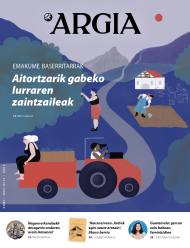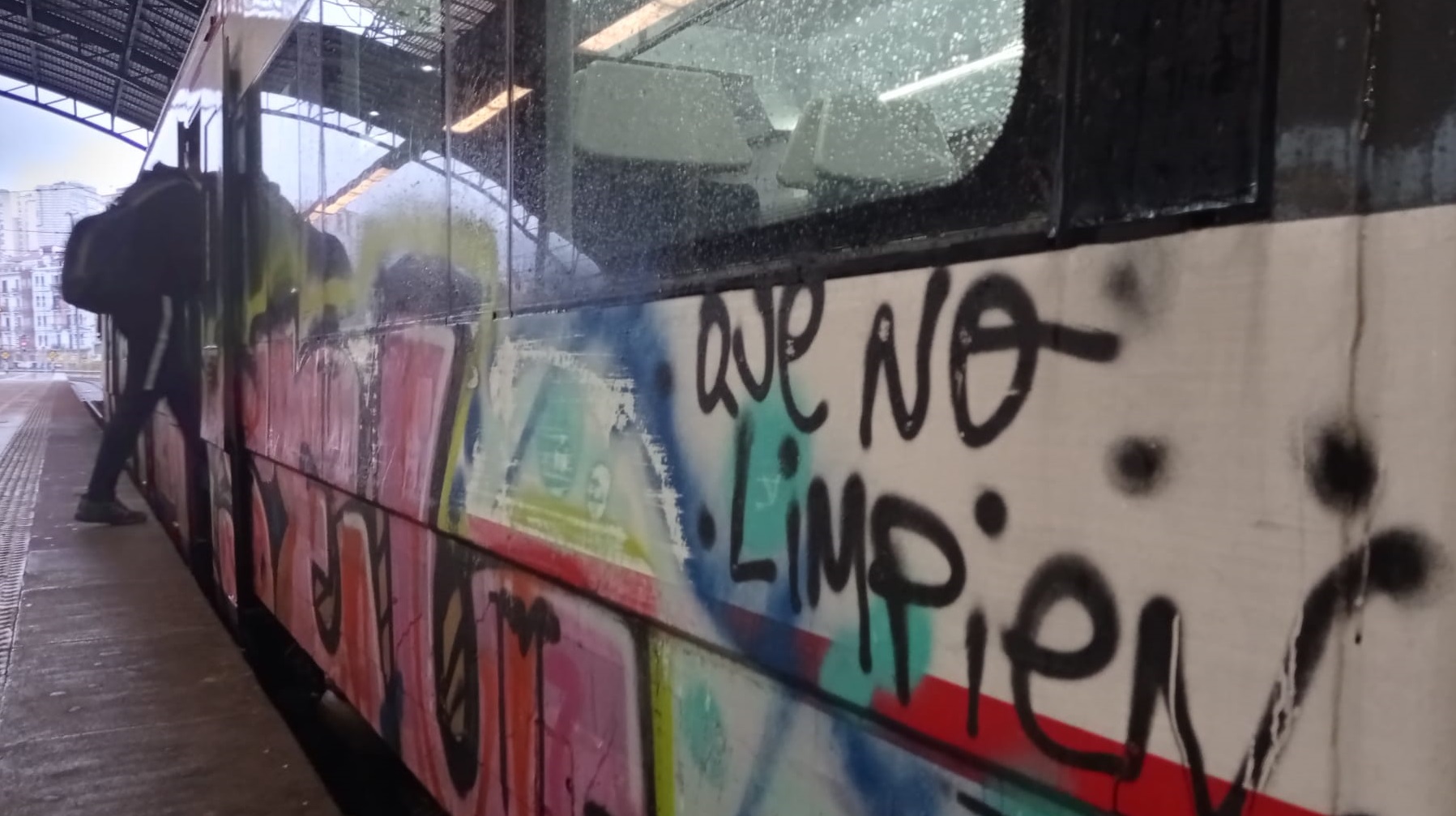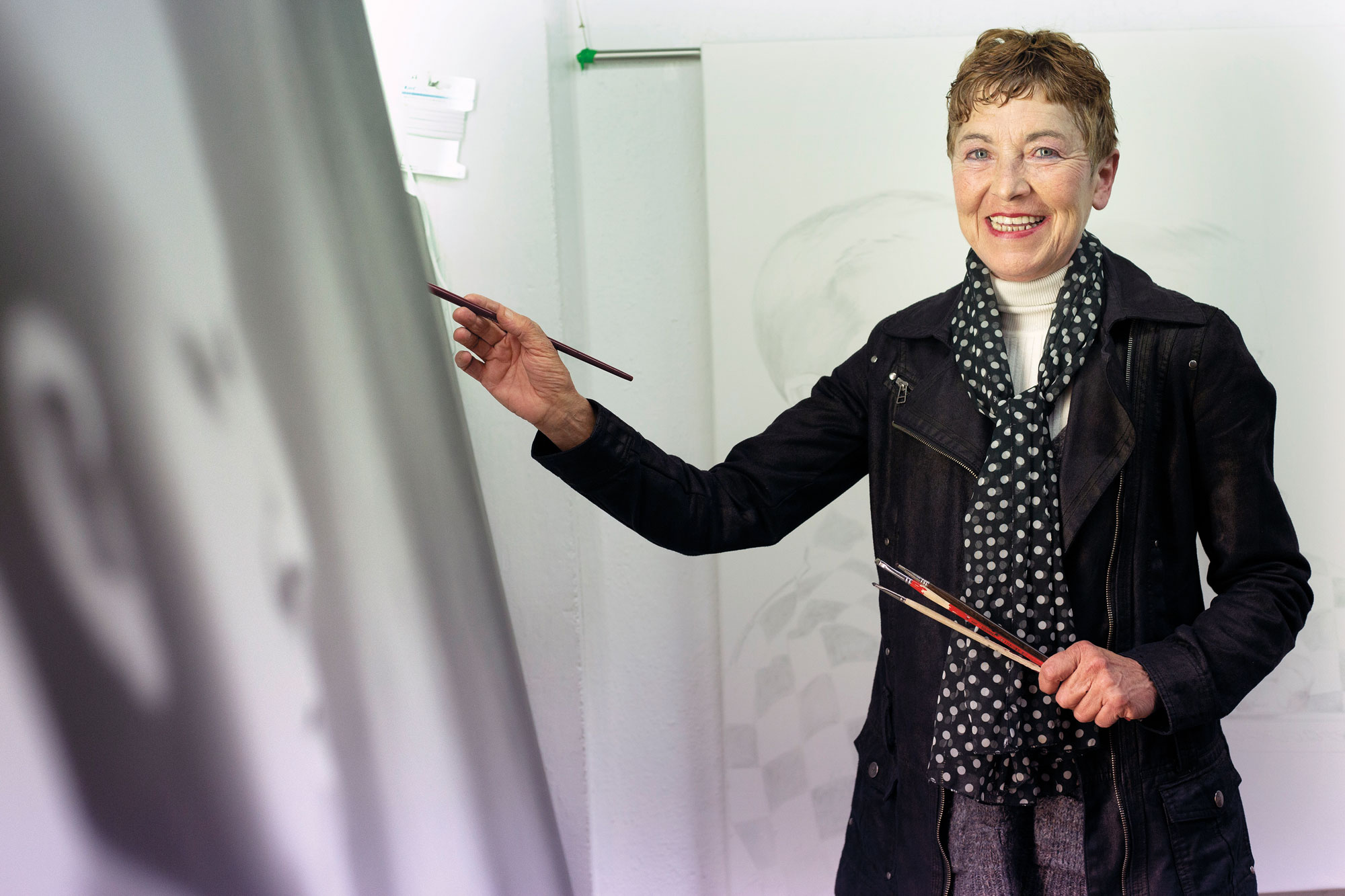Phos
- We access the exhibition hall as if we enter the studio of an artist breaking the invisible barriers of a favorite creative space. We get into the tips of the legs, without making noise with our garments, and in silence, wondering if we have permission to enter that place. In darkness, as our eyes get used to darkness, we perceive large sculptural forms, scattered in space, upright and firm. We just entered the exhibition Persona, photo, copy of Julia Spínola.

The sculptural bodies of Spínola, about ten in total, sprinkle space here, adding Marronaceous brushstrokes to the gray that dominates the room. Past each other and seen from different points, they seem like pieces that are part of an essay choreography: solid, firm, absolute. At first glance I can see the brown color that gives me a hint as to the material of the pieces. The unknown shapes of sculptures and their glossy rough surfaces ask us what they are and how they are made. In this exhibition I have the feeling that I start from scratch, I see myself in the need to adapt to this new language.
Julia Spínola (Madrid, 1978) is mainly dedicated to sculpture, although she works with techniques such as drawing and serigraphy. In our context he is a well-known artist, a referent of many creators and whose echoes of his working methodology we can find in our closest artists. In July 2020 the Artiatx space opened its doors with the exhibition Rojemente de Spínola and the Madrid artist also participated in the Eremuak days. On this occasion, the Artium of Vitoria-Gasteiz offers a solo exhibition showing works of the last decade along with other pieces of new production. While it is true that the installation of the pieces, the relations that are established between them and the conversations, provokes new readings to the visitor.

It is an exhibition that is literally seen in the darkness, that is, there is no artificial light that illuminates the works of art, and the homogeneity that museums usually require is not attributed to the pieces. On the contrary, the natural light entering through the four or five oxen located on the roof is the only light source that illuminates the space, totally variable depending on the season, time of day and time. This factor confers an atypical layer on space and the pieces in it and demands an effort from our gaze. The lack of light makes the works deformed and blurred at first, inseparable twisted forms. We have to approach works of art to master the superficial nuances and observe the finishing of the forms of vegetable fiber. So we'll find that the sculptures that we have in front of us look like thousands of leaves of brown, gray and pink hue.
In 2018, Spínola gave the name of Lubricán to his exhibition at the CA2M center in Madrid, a term that refers to the atmospheric light that occurs when the day passes the night, and vice versa, when the night passes the day. This clarity totally transforms our perception of objects, and there is one of the centers of interest of the artist's research, also present in Artium's exhibition.
The architect Le Corbusier devised a measurement system called Modulor for its buildings, organization of spaces and furniture design, adapted to the dimensions and proportions of man. The exhibition of Spínola shows a presence of the person, with sculptures made to the size of the people. I'm struck by a silex, large, swollen, vegetable fiber sculpture. The artist performs a volumetric transfer of a stone silex discovered 4,000 years ago. The same operation is seen in Rizo (2023), a sculpture that, from a curly hair, increases its size and three-dimensional. The latter hangs in the small room more expelled from the central space, in tension, with oscurities, is hardly a blurred form. As I read later, the artist has made sculptures between 1,27m and 1,55m, equivalent to the height of people, that is, they are shapes and sizes that bodies recognize.

As for the artist's working methodology, he often starts from a collection of texts and references that he collects in his readings, writings or conferences, here and there, references and ideas. The answers, reflections or derivations of these passages are those reflected in his sculptures as the notes taken in a notebook. Therefore, this exposition can be read as a choreography of fragments, hence the title itself, fragmented, following a sequence of ideas: Person, photo, copy. Keeping this idea I come to Phrase (object). Visit to the BOCA plant (2013-2018). On the ground we find objects that are situated in the spill of a coffee (a shoe, rice grains, an empty pot…), it is a journey without beginning or end, the formalization of that phrase that does not end or the musical part of a sheet already started. There are experiences that occur in a continium, through observation, accumulation, fragments... Here we can put this exposition.
Behin batean, gazterik, gidoi nagusia betetzea egokitu zitzaion. Elbira Zipitriaren ikasle izanak, ikastolen mugimendu berriarekin bat egin zuen. Irakasle izan zen artisau baino lehen. Gero, eskulturgile. Egun, musika jotzen du, bere gogoz eta bere buruarentzat. Eta beti, eta 35... [+]
This text comes two years later, but the calamities of drunks are like this. A surprising surprise happened in San Fermín Txikito: I met Maite Ciganda Azcarate, an art restorer and friend of a friend. That night he told me that he had been arranging two figures that could be... [+]
On Monday afternoon, I had already planned two documentaries carried out in the Basque Country. I am not particularly fond of documentaries, but Zinemaldia is often a good opportunity to set aside habits and traditions. I decided on the Pello Gutierrez Peñalba Replica a week... [+]
























